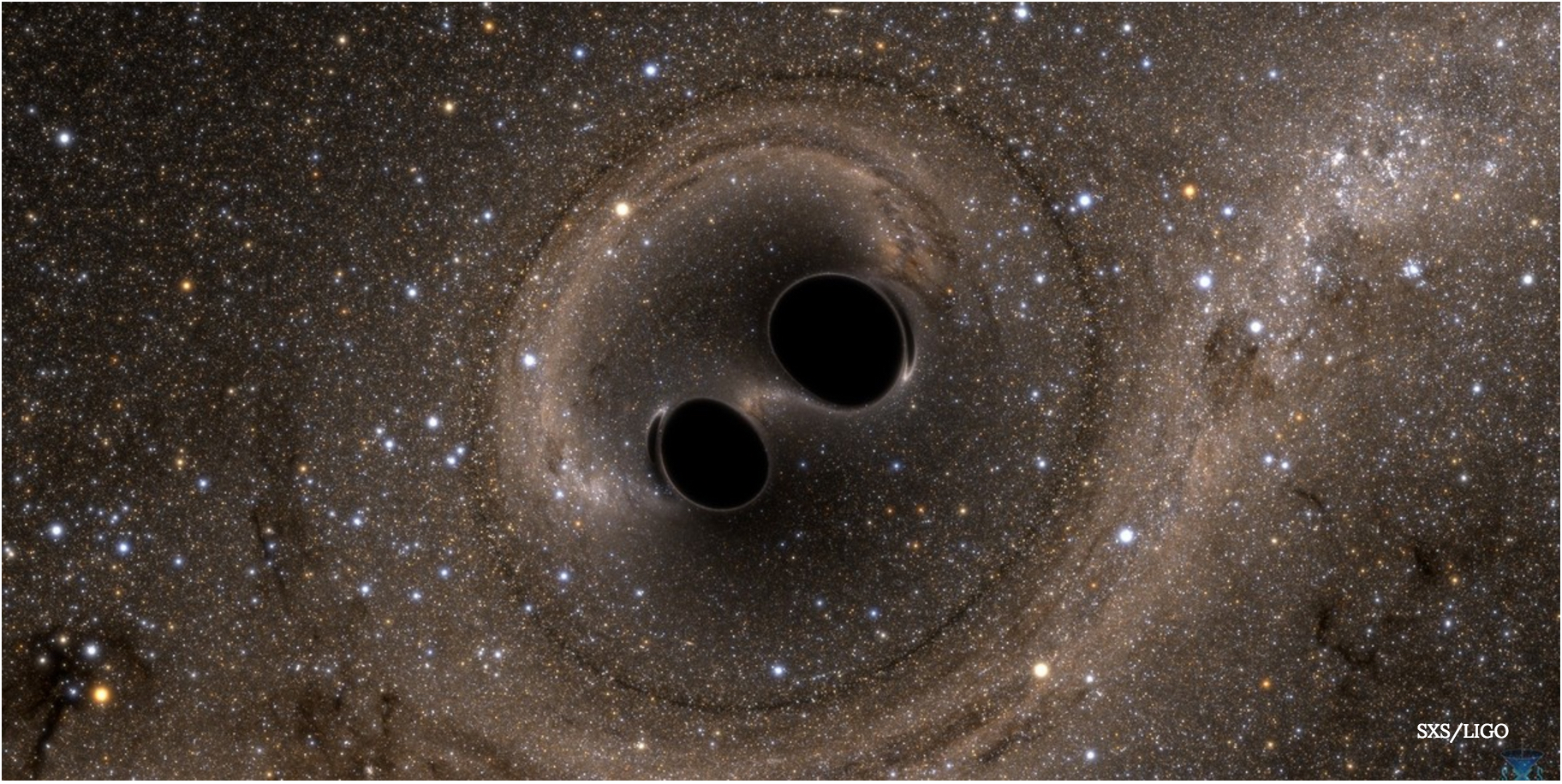Gravitational-Wave Detector Earns Year-End Accolades

The science collaboration responsible for the first-ever direct detection of ripples in cosmic space-time has been recognized by two publications for its monumental achievement.
The Laser Interferometer Gravitational-Wave Observatory (LIGO) was built to detect gravitational waves — a phenomenon that was originally predicted by Albert Einstein in 1915, in a theory that says that space and time are part of the same cosmic fabric. In February 2016, the members of the LIGO team announced that they had succeeded in their quest: They had picked up space-time ripples that were coming from colliding black holes. A second detection was announced in June.
Physics World, the science periodical that is produced by the U.K.-based Institute of Physics, announced today (June 12) that it has awarded LIGO its 2016 Breakthrough of the Year award. In addition, the LIGO collaboration was placed on the year-end list of Global Thinkers that is produced annually by the U.S.-based magazine Foreign Policy.
The Foreign Policy Leading Global Thinkers list highlights individuals or groups "whose ideas have translated into action over the past year, thereby changing and shaping the world we live in," according to a statement from the Albert Einstein Institute in Potsdam-Golm, Germany, where some of the LIGO collaboration members are based.
The LIGO collaboration has also been recently awarded the 2016 Gruber Cosmology Prize by the Gruber Foundation (co-sponsored by the International Astronomical Union), and the Special Breakthrough Prize in Fundamental Physics by the Breakthrough Foundation, which includes a $3 million award.
Follow Calla Cofield @callacofield. Follow us @Spacedotcom, Facebook and Google+. Original article on Space.com.
Get the Space.com Newsletter
Breaking space news, the latest updates on rocket launches, skywatching events and more!
Join our Space Forums to keep talking space on the latest missions, night sky and more! And if you have a news tip, correction or comment, let us know at: community@space.com.

Calla Cofield joined Space.com's crew in October 2014. She enjoys writing about black holes, exploding stars, ripples in space-time, science in comic books, and all the mysteries of the cosmos. Prior to joining Space.com Calla worked as a freelance writer, with her work appearing in APS News, Symmetry magazine, Scientific American, Nature News, Physics World, and others. From 2010 to 2014 she was a producer for The Physics Central Podcast. Previously, Calla worked at the American Museum of Natural History in New York City (hands down the best office building ever) and SLAC National Accelerator Laboratory in California. Calla studied physics at the University of Massachusetts, Amherst and is originally from Sandy, Utah. In 2018, Calla left Space.com to join NASA's Jet Propulsion Laboratory media team where she oversees astronomy, physics, exoplanets and the Cold Atom Lab mission. She has been underground at three of the largest particle accelerators in the world and would really like to know what the heck dark matter is. Contact Calla via: E-Mail – Twitter









